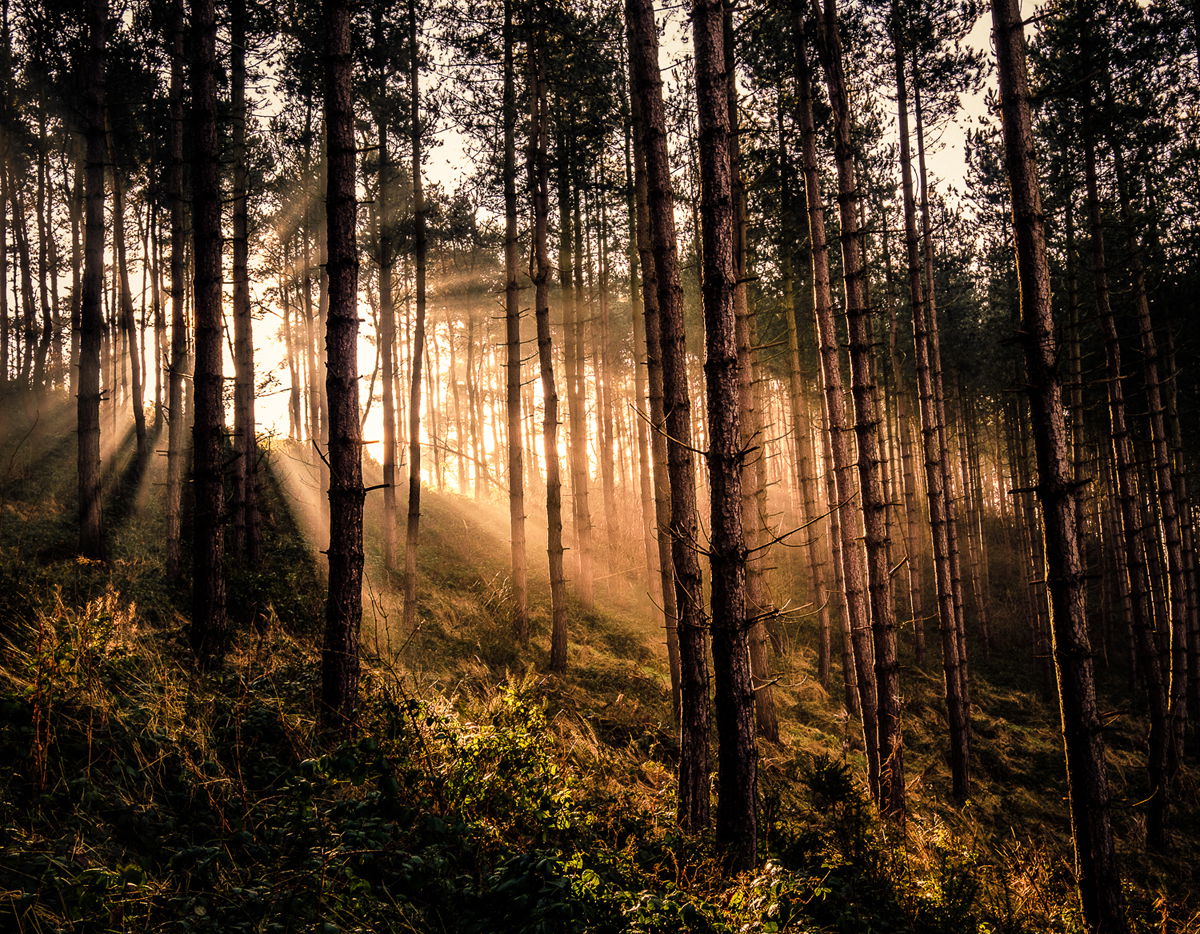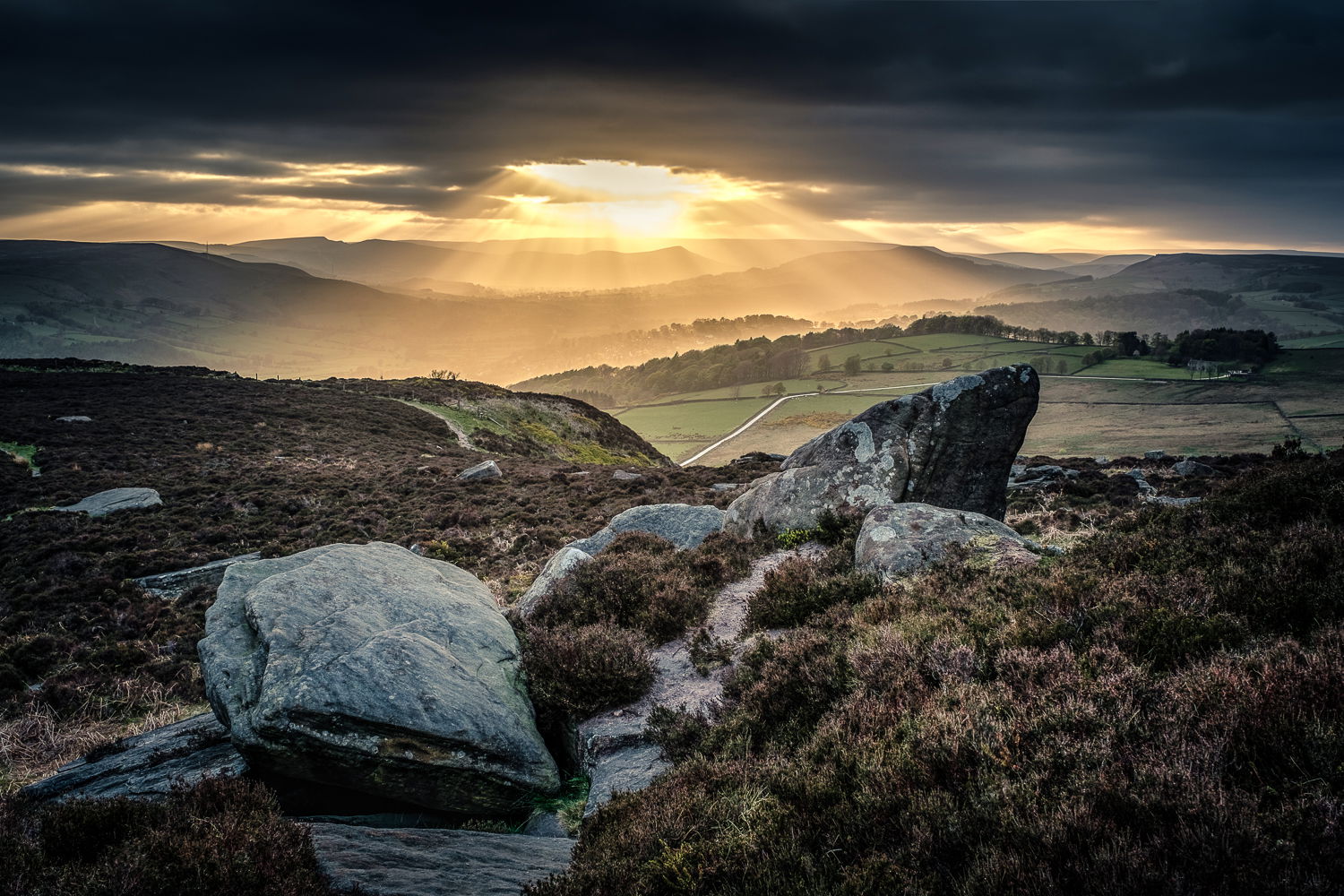Photography is all about the light and, as landscape photographers, we are constantly searching for the most interesting and evocative lighting conditions. Without it our pictures can be dull and lacklustre but when Mother Nature performs her magic, the landscape is transformed enabling us to capture some stunning imagery.
Some of my favourite conditions are shooting into the sun to capture those dramatic sunbeams, starbursts or beautiful back-lit scenes. Although this is counter intuitive to everything we are taught early in our photographic journey, this technique helps emphasise, shapes, lines and silhouettes to produce some striking images.
Here are some hints and tips to help you capture atmospheric sun kissed images.
 FUJIFILM X-T2 + XF16-55mmF2.8 R LM WR – 1/60 sec. at F11, ISO 200
FUJIFILM X-T2 + XF16-55mmF2.8 R LM WR – 1/60 sec. at F11, ISO 200
 FUJIFILM X-Pro2 + XF56mmF1.2 R – 1/125 sec. at F11, ISO 1250
FUJIFILM X-Pro2 + XF56mmF1.2 R – 1/125 sec. at F11, ISO 1250
Weather
When shooting sunbeams the first thing you need is strong sunlight! Sunbeams are most pronounced when they bounce off elements in the atmosphere, such as dust or moisture in the form of mist. But it needs to be the right amount of mist; too little and the rays won’t be strong enough, too misty or foggy and you won’t see any. Autumn and Spring often produce the best conditions. Check the weather forecast and look for calm conditions and bright sunshine after a period of rain.
Time of Day
The best conditions are usually early in the morning, late in the afternoon or early evening, though in the winter the sun never rises too high so this period can be extended.
Composition
Shoot towards the sun, with it at 45-180 degrees to your camera. Partially hide the sun behind a tree or other object for a greater effect. Isolating the light area against a darker background, for example making use of a forest canopy, will help the rays look more defined. Finding some open areas for the rays to flood with light can really add some impact to your shots. Look for different compositions and locations but work quickly as these conditions usually don’t last too long!
Technique
You can shoot with any lens depending upon the look you are trying to capture and, whilst wide angle shots can work, I also like to use a longer lens to isolate an area of the scene and compress the perspective. Prime lenses, because of their more simple construction with fewer elements and groups, are usually better than zooms at reducing lens flare. Use a tripod to help you refine your composition and maximise the impact of the rays and check around the frame for distracting elements.
Select a low ISO for the best file quality and shooting RAW will give you more flexibility in post processing. Use a smaller aperture, such as F11, for increased depth of field and to highlight the diffraction of the rays.
Metering in these situations can be tricky because of the huge dynamic range. If you have a large, dark area of forest your meter will overexpose the scene and the rays will not be clearly defined. Shots need to be exposed to preserve highlight detail and then use software to recover some shadow detail. I usually shoot in Manual or Aperture Priority and use Exposure Compensation to underexpose to retain detail in the highlights. Exact settings will, of course, vary but try -1 or-2 stops and check your histogram. You can also meter a bright area but away from the direct sunlight. If you’re not sure about your exposure you can always bracket by selecting AE Bracketing in the Drive mode on your camera. I normally set my bracketing to 3 or 5 steps with a 1 stop increment in between.
Another option is to use neutral density (ND) graduated filters to balance the exposure of the foreground and sky. The dynamic range will likely be very wide so you may have to use 2 filters, slightly offset for best effect.
Polarising filters are great to reduce glare and bring out the saturation, however you need to be careful when using filters to avoid getting lens flare, especially when using wide angle lenses.
Starbursts and sunbursts are created from small point sources of light and, although the sun is not generally a small light source when it is low in the sky, early and late in the day, we can use it to provide us with a focal point in our images. To create the starburst, select a narrow aperture like F16 or F22. Partially obscuring the sun will exaggerate the effect. Compose your image with the sun obscured behind a tree or other object then move slightly so that the sun just peeps out and take the shot.
When the sun is low, but out of shot, it can create some wonderful lighting and atmosphere, particularly when there is low lying mist. Look for subjects to back light such as trees, fences or people out on their early morning walk. In these conditions, I definitely favour using a long lens such as the XF55-200mmF3.5-4.8 or XF50-140mmF2.8 to compress perspective. As with the sun rays, make sure you expose to retain detail in the highlights.
Remember to keep your lens and filters spotless, as shooting into the sun can be very unforgiving. Any dust or greasy finger marks will show up and degrade the image.
It’s always good to know places locally that you can get to quickly when the conditions are right. Keep an eye on the forecast, prepare your gear and make the most of the light to create some awesome sun blessed images.
Finally, a health warning; take extreme care when photographing the sun and do not look directly into the sun when composing your images. Whilst using a mirrorless camera means that you are only seeing an image of the sun in the viewfinder, you should not expose your sensor to prolonged periods of intense sunlight. Anyone reading this who uses a DSLR should definitely not look through the lens directly into the sun as even a short unprotected glimpse through the viewfinder could cause you permanent eye damage.



















































